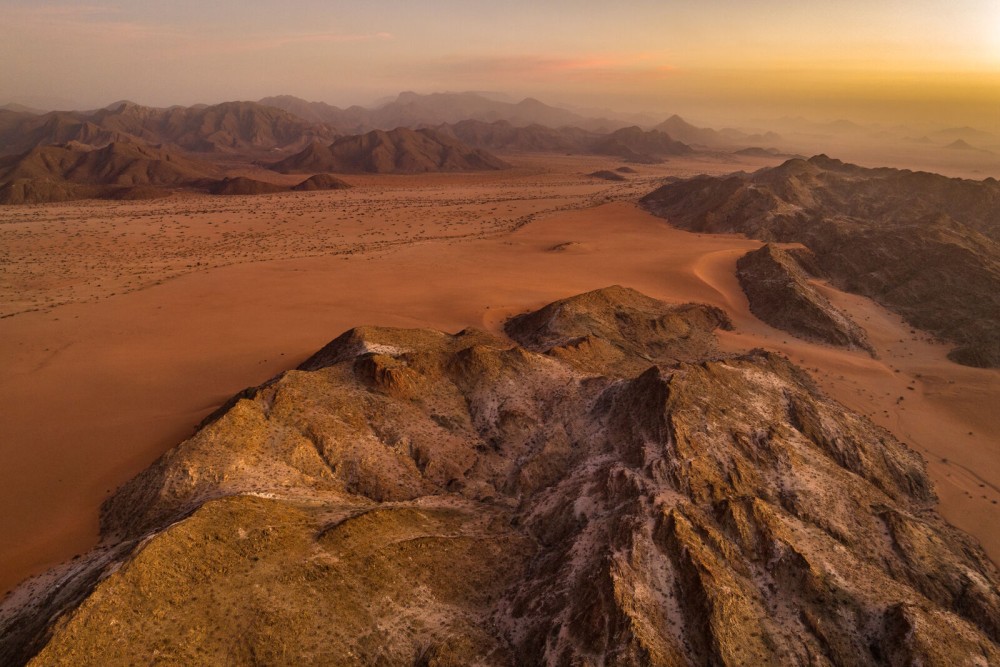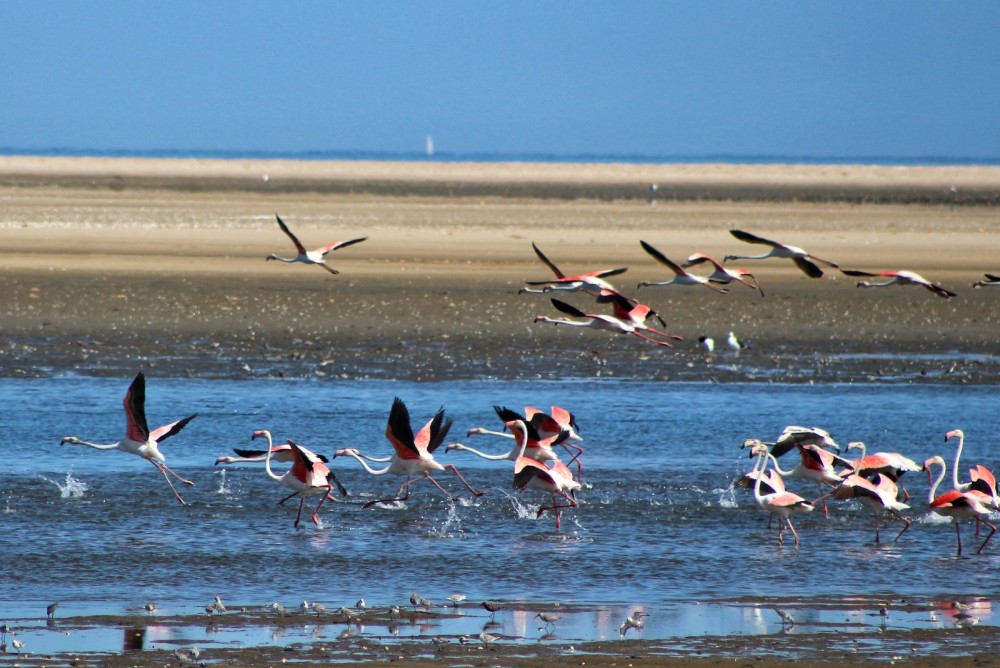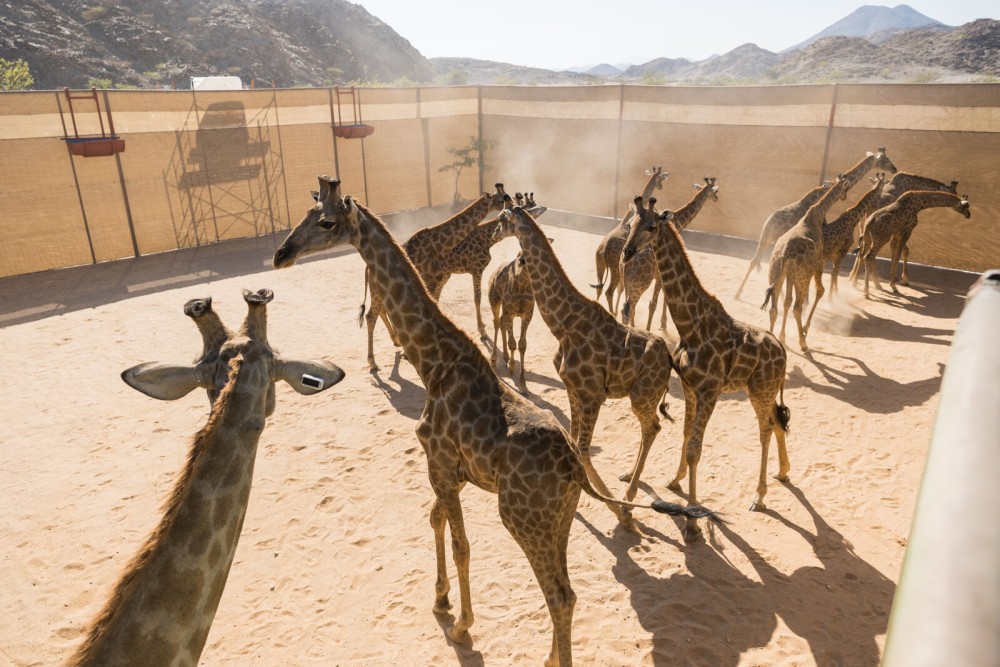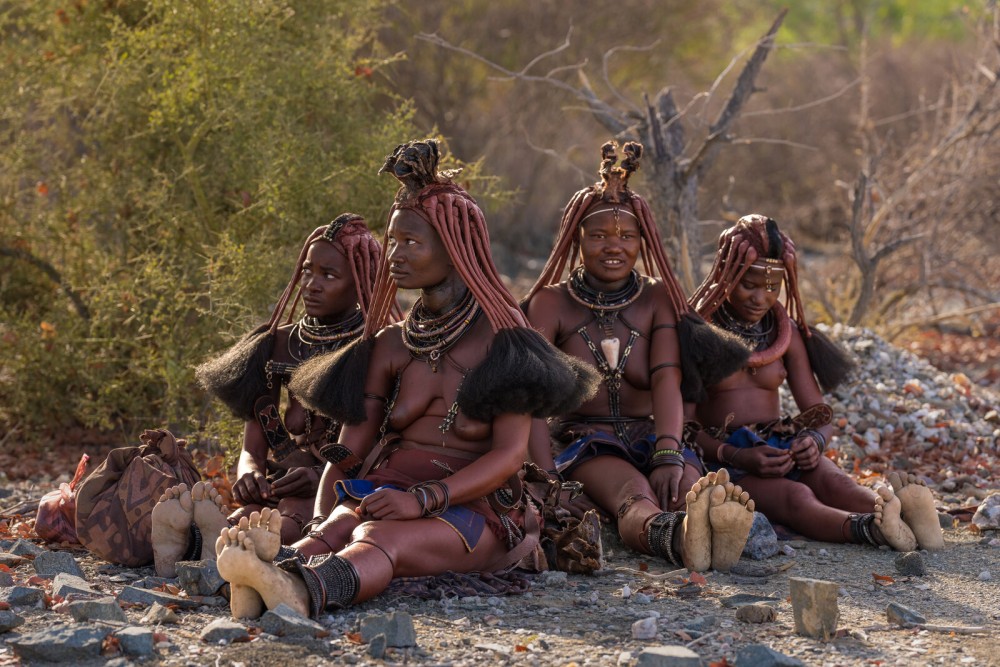Species translocations are pioneered in the Namib as Angola’s people and wildlife enter a new era
Today, Iona National Park is emerging from decades of strife and once again becoming home to species long-lost to the landscape. Thanks to a successful step-by-step approach to park management and community involvement, a first-ever large mammal translocation has been made possible in Iona - restoring a founder population of Angolan giraffe to their historical range.
Iconic for its red sand dunes, shipwrecked coast, Welwitschia mirabilis plants dotting the side of the road and wildlife that inhabit the most arid of environments, in southwestern Africa lies the oldest desert in the world, the Namib. Though the Namib Desert most often calls to mind images of Namibia, few know that there is a hidden gem in the section of the Namib that lies just across the border, in Angola. This is Iona National Park, Angola’s oldest protected area and one of its largest, spanning 15,150 km2. From the shifting dunes spanning the coastline along the Atlantic Ocean to the mountains of the Southern Angolan Escarpment Zone, rising over 2,000 metres, Iona hosts a range of landscapes and geological diversity.
A Brief History on Iona

With its exceptional biodiversity and remarkable landscapes, Iona was first declared a protected area in 1937, before it was designated Iona National Park in 1964. However, four decades of conflict due to the War of Independence and subsequent civil war devastated the country, its people, and conservation efforts. These years of neglect and lack of conservation law enforcement across the country led to the local extinction of many species in Iona, including black rhino and elephant, and the flight of local communities from Angola to Namibia. Today, rhino rubbing stones still stand in the east and a rusted, broken-down Ford Fairlane car can be seen on the gravel plains, abandoned by a Portuguese couple fleeing to Namibia in the early 1970s ̶ landmarks reminding all who pass by of a legacy of insecurity and a country consumed by conflict.
But, since peace arrived in Angola in 2002, local communities began making their way back to their homelands, while efforts to reestablish the country and its protected areas were launched. This included the 2018 establishment of the Iona-Skeleton Coast Transfrontier Conservation Area (TFCA), one of the largest TFCAs in Africa. As part of this revival, African Parks signed a management agreement with the Angolan Government in 2019 and since then has been working towards conserving and restoring the iconic landscape. Reintroducing Angolan giraffe (Giraffa giraffa angolensis) back into the area ̶ which were thought to have gone extinct in the region by the 1940s and in the entire country by the 1990s ̶ forms part of these restoration efforts.
A Desert of Rich Biodiversity

Remotely located, Iona National Park is an area of high endemism with many species of flora and fauna occurring only in the region. Recent surveys have given a better understanding of the park’s biodiversity. A herpetofauna (reptiles and amphibians) survey published in 2022 recorded 75 amphibian and reptile species, 40 for the first time within the park! The coastal lagoons provide an important area for migratory seabirds and shorebirds, with a 2023 coastal survey counting 55,000 Cape Cormorants alone, in results to be published soon by Wetlands International. Along with sustaining populations of herbivores such as mountain zebra, oryx and springbok, black-backed jackal and brown hyaena are also found across the park, and limited numbers of cheetah, caracal and leopard exist in the landscape. Iona boasts one of the highest densities of Welwitschia plants, a species that can live for over 1,000 years.
A New Chapter Begins
Partnering with Giraffe Conservation Foundation, African Parks assessed the feasibility of translocating a founder population of Angolan giraffe from Namibia.
To begin the process, a habitat analysis was conducted in Iona which yielded favourable results for bringing the species back to the park. Consultations with communities living in and around Iona were undertaken and received positively, with support from locals as giraffe do not compete with their livestock for forage and water. As a result, joint preparations for the translocation began in earnest in Namibia and Angola including finding an appropriate source population, building a holding enclosure for the giraffe arrival, securing water availability, improving roads for the transport truck’s passage, and obtaining import and export permits from the relevant authorities.

In July 2023, these efforts culminated in the successful capture of 14 Angolan giraffe at a private game farm in Namibia. Aged between 3 and 5 years old so that they were not too tall to be transported, the giraffe endured a tedious 36-hour journey to Iona National Park. On arrival they were released into a specially constructed enclosure where their condition and stress levels were checked before being released into the park close to a riverbed lined with plenty of forage including Mopane trees and various Vachellia species, such as camel-thorns.
Living in Coexistence
Semi-nomadic Herero communities live alongside Iona’s wildlife, including Muhimba, Mucubal, and Mucahona ethnic groups, who carry out traditional livelihoods as pastoralists. However, the last decades of exponential growth of human and livestock populations, coupled with lower-than-average rainfall and unsustainable development, have exacerbated pressure on Iona’s ecosystem. Human-wildlife conflict in the form of livestock predation threatens communities’ livelihoods, and the ensuing poisoning threatens the park’s carnivores and scavengers. To reverse these trends and adapt intervention techniques, Iona’s park management and Community Development team prioritise ongoing engagement with communities. This includes working with traditional leaders and communities to complete participatory mapping; the data of which will be used in developing a comprehensive Land Use Plan that promotes conservation areas, without compromising traditional rights-use of the local communities.

In late 2022, members of the local Himba communities underwent stringent training in Iona to be recruited as wildlife monitors. Twenty-one of the candidates successfully completed the training and now work alongside park rangers, focusing specifically on continuous monitoring of the giraffe and other wildlife on the ground. With their deep knowledge of the area, the wildlife monitors are well positioned to ensure the wellbeing of wildlife populations and will continue to be a critical facet in all future reintroductions planned.
Sadly, by the first week of August, three of the giraffe had died in unrelated incidents. The conditions surrounding the deaths were assessed and while no specific cause could be determined, it was concluded that the deaths were natural, with no human influence. Possible causes could be snake bite, natural trauma, unknown underlying pre-existing condition or idiopathic maladaptation to the new environment. Wildlife translocations are risky and losses are not entirely unexpected, however, with the survival of the remaining animals, the resilience of each to adapt and establish a viable giraffe population in the park is highlighted, giving hope for the long-term success of the translocation. Through the well-planned giraffe monitoring programme, wildlife monitors are able to keep constant communication with Giraffe Conservation Foundation on the animals’ behaviour and condition, while updating the programme as needed to ensure continued monitoring of the remaining individuals.
With the most critical adaptation period of two months now passed, despite the unfortunate initial loss, the Giraffe Conservation Foundation and the team on the ground continue to be optimistic for the long-term establishment of a viable Angolan giraffe population in Iona and a second giraffe translocation is being planned for the first half of 2024. In the future it is hoped that Iona will also be the recipient of reintroductions of black rhino, lion, and possibly even, elephant, to restore this spectacular desert park to its historic glory.
1 November 2023 – Priya Tekriwal, African Parks
Your Support Goes a Long Way
At African Parks we are working everyday to protect Africa's last wild landscapes. By donating to us, you are making a difference and are giving hope to people and wildlife across the continent.
Donate